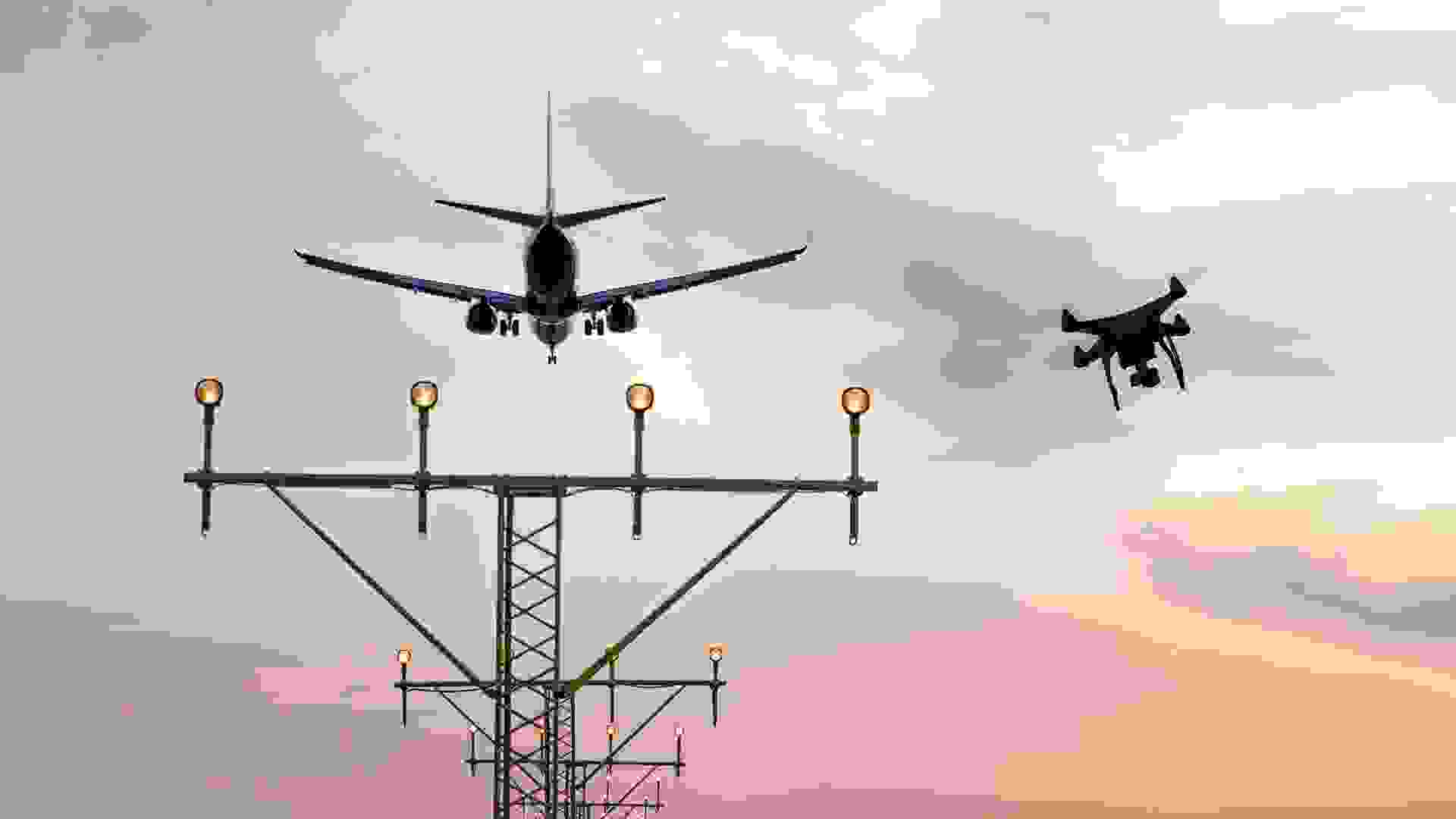Are there drones in the Belgian airspace?

The development of drones has received a lot of attention in recent years. They are easy to use and accessible, have a wide range of applications and are used by a very diverse audience. From children's toys to drones for infrastructure monitoring, these Unmanned Aerial Systems (or UAS) will increasingly become part of our daily lives. They will even be used to transport people. Where do things stand in Belgium?
 In China, it's no longer front page news: drone taxis are transporting people there! In Belgium too, and more generally in Europe, the greatest attention is being paid to preparing and setting up a specific and safe airspace to manage this new type of air traffic.
In China, it's no longer front page news: drone taxis are transporting people there! In Belgium too, and more generally in Europe, the greatest attention is being paid to preparing and setting up a specific and safe airspace to manage this new type of air traffic.
Safety is the top priority, but economic aspects and social acceptance will also determine the pace at which these new airspace users are introduced.
About 100,000 flights were operated in Belgium in 2023, of which 15,000 in the airspace controlled and managed by skeyes. Demand is therefore high and will grow rapidly in the coming years.
To meet this demand, a new European regulation provides for the creation of a specific airspace for drones, known as U-space. This will enable frequent and complex operations with drones.
The BURDI (BeNe U-space Reference Design Implementation) project, launched in late 2022 and coordinated by skeyes, aims to roll out this U-space. But that is not all. The BURDI project, which brings together a consortium of 18 aviation industry partners including drones, logistics, transport and governments, is also developing automated processes that will enable the provision of services adapted to drones.
Given the type of traffic specific to UAVs and its expected density, automation will play a central role in providing these specific navigation services.
“Safety is essential,” emphasised Johan Decuyper, CEO of skeyes, during his interview on the VRT programme Terzake on Friday 12 April 2024. “Effective control will be automated with applications for detecting drones that will communicate with each other over the 5G network and applications for preventing conflicts between trajectories to ensure a safe distance between drones in flight. We have created a subsidiary - SkeyDrone - to oversee drone flights in specific areas. It is the first company certified for drone traffic management.”
skeyes was designated as a CISP (Common Information Service Provider) in 2023. Its mission is to ensure data exchange between current conventional aviation and these new players in unmanned aviation, enabling secure integration.
“We are therefore focusing on providing a stable base,” adds Johan Decuyper, “on which other developments, such as drone taxis, will be possible”.
Complex flights already operated in Belgium and Europe
Belgium, along with Switzerland, plays a pioneering role in Europe. No country has yet made progress in creating an airspace in which unmanned aviation can develop. With BURDI, skeyes is helping to develop European regulations to make unmanned aviation commercially attractive in controlled and uncontrolled U-space airspace.
Drones are already part of our airspace today. Drone taxis perhaps appeal more to the imagination, but have yet to be certified in Europe. This type of vehicle is known as an eVTOL (electrical Vertical Take-Off and Landing). German start-up Volocopter has developed several models, with or without a pilot, for transporting people and for emergency medical transport. Several manned test flights have already been carried out in Germany and France.
It is only a matter of time before these devices make their appearance here. Our country is fully aware of this. That is why Belgium organised a summit in Antwerp to coincide with the European presidency, bringing together the main European players in this field.
In Belgium, near Sint-Truiden, the DronePort campus is entirely dedicated to drone research, development and testing. In July 2023, the first blood transport test was conducted here with a Chinese-designed drone (EHang) intended to carry passengers.
Another development hub in Belgium is the port of Antwerp-Bruges. skeyes, SkeyDrone, the port of Antwerp-Bruges and a number of other partners such as drone operator DroneMatrix and software developer Unifly have joined forces to create a flight zone covering the 120 km² of the port where BVLOS (Beyond Visual Line of Sight) operations are allowed. Drone flights are performed from a single control centre, so pilots have no direct visual connection with the aircraft during flight. The drones can be used to monitor port infrastructure and cargo. This project at the port of Antwerp-Bruges is one of the most advanced in Europe.
The port of Antwerp-Bruges hosted the first European BVLOS flight on 21 June 2022 as part of the SAFIR-Med project (Safe and Flexible Integration of Advanced U-space Services Focusing on Medical Air Mobility). The aim of this project was to develop solutions for integrating safe, sustainable and socially acceptable urban air mobility for the benefit of the community, with a focus on medical applications. The port of Antwerp-Bruges, with its long airways across the Scheldt, is an ideal test area.
Other applications for drone flights are already underway in Belgium, including the inspection of critical infrastructure by Elia, the operator of the high-voltage electricity transmission network, and by Infrabel for the rail network.
When will we see drones flying in the sky ?
In Europe, we are following a different roadmap to that of China. We attach greater importance to the safe integration of this technology into airspace. But U-space and all the applications that will guarantee safe drone flights are in the process of being finalised.
Initially, commercial applications will emerge, such as cargo drones, as well as socially beneficial applications such as medical devices. Passenger-carrying drones, which require an even higher level of safety, will follow at a later stage. In Europe, drone taxis are also undergoing certification procedures.
 In terms of regulation, the 3rd legislative package approved by Europe in April 2024 will pave the way for air taxis. Initially, the pilots of these eVTOLs will still communicate with air traffic control. The first flights of unmanned drones carrying passengers are expected in the next few years in Belgium and Europe.
In terms of regulation, the 3rd legislative package approved by Europe in April 2024 will pave the way for air taxis. Initially, the pilots of these eVTOLs will still communicate with air traffic control. The first flights of unmanned drones carrying passengers are expected in the next few years in Belgium and Europe.
skeyes also plays a key role thanks to its expertise and influences the regulations that are translated into operational procedures and working methods.
skeyes is a pioneer in the field of integrating drone traffic and has been supporting new emerging applications for some years now. The company does this through numerous projects, at both European and national level.
For the development of new applications and services provided by drones, the level of social acceptance will be decisive. While urgent medical transport is likely to meet with unanimous approval, parcel or pizza deliveries are unlikely to gain the support of a majority of the population.
In any case, we can look to the future with confidence, because in Belgium there is both a great deal of attention paid to safety and a very active drone sector, which opens up a host of economic and social opportunities.




